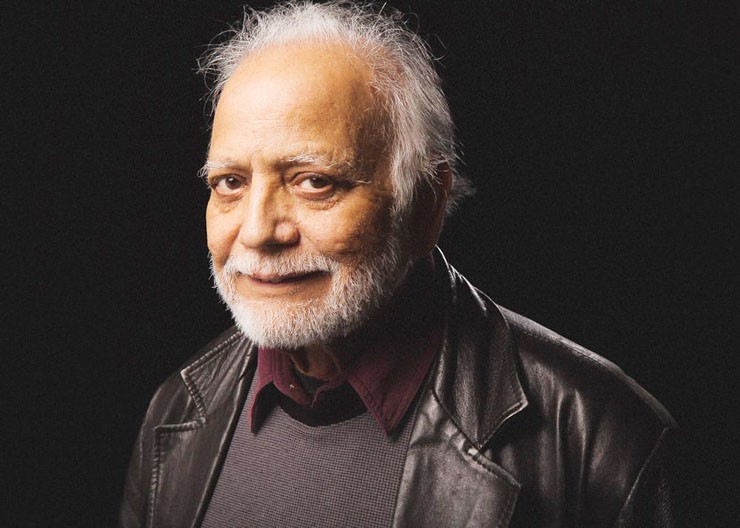
A powerful reflection on our limits and the many ways humans fall in and out of love

Haider’s fiction, short stories included, seems inspired by real life nightmares. However, the beauty of his fiction is the manner in which it is written -- which is the exact opposite of what nightmarish prose would look like.
text:
Syed Afzal Haider’s last novel To Be With Her ended on a somewhat bitter-sweet, face-saving, victory-for-love note. It was a delicate story and South Asians in the US or South Asian American writers did not bother much with its subtle narrative, to their own detriment.
Set in the 60s, in To Be With Her Part-Pakistani/part-Indian Ramzan goes to America to become an engineer leaving his beloved fiancé Leila, behind. In the US he meets Sabina, who accepts him unconditionally knowing that he is taken and must go back. Once back in Karachi he rebels against his family to be with Sabina. Towards the end of the novel, Ramzan does offer an apology to Leila for betraying her trust but it is left to the reader to figure out whether she forgives him or not. The novel ends with him on a plane returning to Sabina, but the reader doesn’t ever get to know if Sabina and Ram, short for Ramzan, end up together.
Life of Ganesh is the same story retold from a different, slanted angle. Haider’s fiction, short stories included, seems inspired by real life nightmares. However, the beauty of his fiction is the manner in which it is written -- which is the exact opposite of what nightmarish prose would look like. Although Ramzan is referred to as Ram throughout To Be With Her and he alludes to Sabina as his Sita once or twice; in Life of Ganesh Ram has metamorphosed into Ved and is from India; his only connection to Pakistan remains his childhood friends most of whom were Muslims and opted for Pakistan for safety. Just as Ram never recovers from the loss of his childhood spent in India before migrating to Karachi, Ved constantly laments for his friends who vanished within a blink of an eye.
Before he leaves for the US, Ved gets engaged to a woman named Sita that he has only ever seen in photographs, as per his mother and uncle’s wishes. While in the US for his PhD, Ved falls in love with a fellow student Joyce -- a la Ram and Sabina style -- knowing fully well that he has been promised to another woman back home. In a departure from To Be With Her’s Ram, Ved, despite his decision to break his engagement, ends up marrying Sita after Joyce dies in a plane crash. He marries her in a state of depression, anger, and grief. The novel opens as they begin their summer vacation in southern France, but Ved is still depressed and angry despite being married for several years now with a five-year-old son they both love.
20th century for South Asian American writers is also a century of displacement and broken promises. While fiction by these writers has handled varied subjects, political and social, quite successfully, it has not yet dealt with issues of a more emotional nature. Recently, I came across a very refreshing short story by Chaitali Sen which skilfully and poignantly deals with ghosts from an immigrant’s past. A grown-up daughter tries to process, as her father passes away, the pain of the secret he kept from her: of deserting his wife and child when he met the protagonist’s mother in the UK.
Like Ram, Ved too carries a contradiction within him. When he falls in love, it is intense and becomes the entire focus of his life, yet he easily gives in to sexual temptation. Both male protagonists in these novels cheat on all the four women they have ever loved. So when the reader sees Ved falling for the American woman, Marilyn, living in a village in Southern France, it is hard to tell whether his infidelity is due to an arranged marriage to Sita or that it is impossible for the romantic in him not to flirt. To Ved’s surprise, Sita reveals at a village party that she too had someone she loved before marrying Ved, but Ved is certain that Sita would never cheat on him as she is a ‘woman of principles’.
Life of Ganesh can be broken into three parts. The first part begins with Sita and Ved arriving in France and the few people they befriend; including long conversations which give the reader an insight into Ved’s anguish and philosophy. The second part deals with Ved’s memories of time spent with Joyce in the US and especially in France. If the reader gets the sense of this part, Ved’s attraction to Marilyn makes perfect sense. The third part is about Ved’s time in India bringing himself to accept his marriage to Sita as a slap of fate.
Finally, the title Life of Ganesh?
Ved’s father is an artist who makes sculptures of Ganesh during the Chauthurti festival for his family. After the death of their first son, Ved’s mother prayed to Lord Ganesh for another son, and after he was born, she wanted to name him after Lord Ganesh, to which the father said no, his point being, "Ganesh met many obstacles, had a difficult childhood, and an elephant face."
When the pain of having lost Joyce becomes unbearable for Ved, he secretly wishes for someone to just dip his head in water to cleanse him of his past -- the way they did with the Ganesh sculpture at the festival.
A novel sometimes is its writer’s wishful thinking camouflaged with a narrative of longing, delicate language, some humour and sex, and plenty of other things.
Life of Ganesh
Author: Syed Afzal Haider
Publisher: Weavers Press, SF
Pages: 236
Price: $17.95